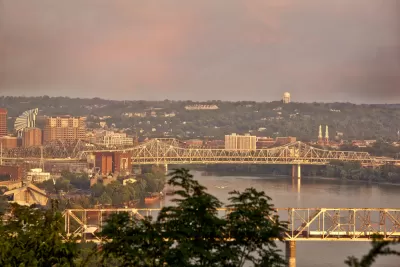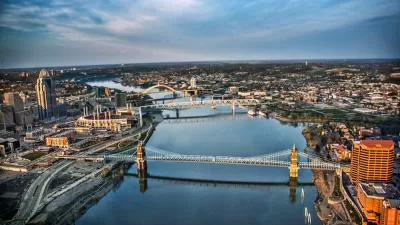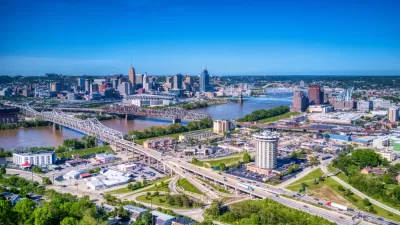The already congested Brent Spence Bridge between Cincinnati and Northern Kentucky will be partially closed this summer for repairs. The project still won't fix larger problems with the bridge.

Cameron McWhirtle and Shane Shifflett report:
The Brent Spence Bridge that connects Cincinnati to northern Kentucky is often notoriously jammed with miles-long backups. Now, for two months this summer the eight-lane bridge that carries Interstates 71 and 75 across the Ohio River will be down to half that many lanes as it undergoes repairs.
But that's not the worst part of the story, according to the article.
This summer’s repairs on the Brent Spence cost $38 million for repaving, updating lighting and other improvements. But it won’t solve the problem that has had Kentucky and Ohio lawmakers at loggerheads for years: how to pay for a major overhaul of the double-decker span that carries as many as 180,000 vehicles a day, including an estimated $1 billion worth of freight daily, according to the Ohio-Kentucky-Indiana Regional Council of Governments.
In addition to providing more details about the project, the article places the challenges of the Brent Spence Bridge in context of the nationwide trend of crumbling infrastructure, as evidenced by the state of the nation's bridges.
FULL STORY: Aging Infrastructure Means More Logjams at One of U.S.’s Worst Bottlenecks

Montreal Mall to Become 6,000 Housing Units
Place Versailles will be transformed into a mixed-use complex over the next 25 years.

Planetizen Federal Action Tracker
A weekly monitor of how Trump’s orders and actions are impacting planners and planning in America.

DARTSpace Platform Streamlines Dallas TOD Application Process
The Dallas transit agency hopes a shorter permitting timeline will boost transit-oriented development around rail stations.

Study: 4% of Truckers Lack a Valid Commercial License
Over 56% of inspected trucks had other violations.

Chicago Judge Orders Thousands of Accessible Ped Signals
Only 3% of the city's crossing signals are currently accessible to blind pedestrians.

Philadelphia Swaps Car Lanes for Bikeways in Unanimous Vote
The project will transform one of the handful of streets responsible for 80% of the city’s major crashes.
Urban Design for Planners 1: Software Tools
This six-course series explores essential urban design concepts using open source software and equips planners with the tools they need to participate fully in the urban design process.
Planning for Universal Design
Learn the tools for implementing Universal Design in planning regulations.
City of Mt Shasta
City of Camden Redevelopment Agency
City of Astoria
Transportation Research & Education Center (TREC) at Portland State University
US High Speed Rail Association
City of Camden Redevelopment Agency
Municipality of Princeton (NJ)





























